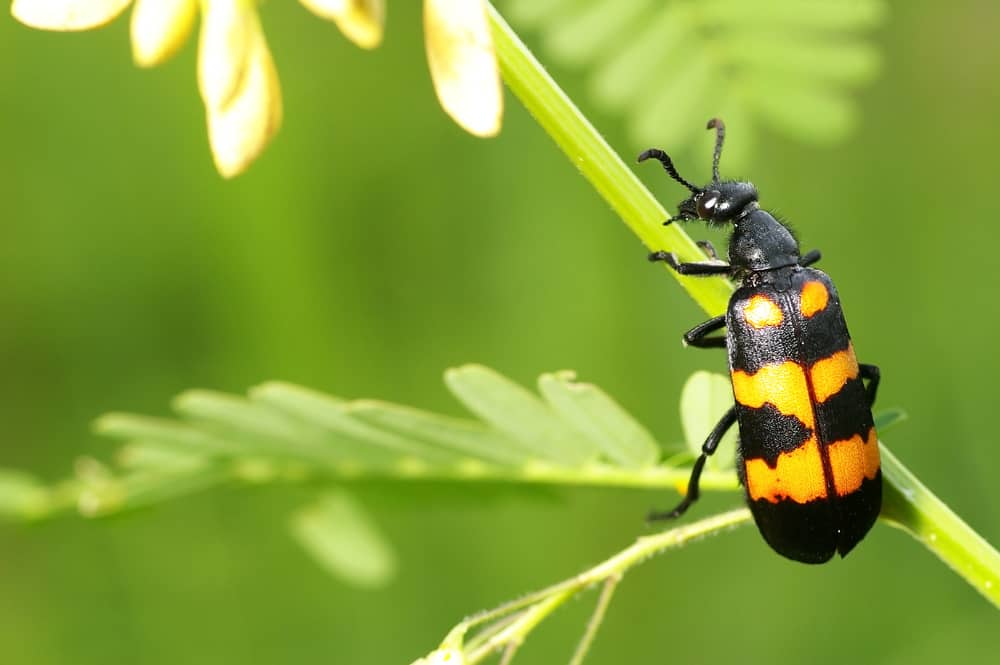Blister beetles cause blisters – quite literally. This is how they got their name in the first place!
These cylindrical beetles are found in the Southern and Eastern parts of the US. You will find them typically abundant in the grasshopper regions. But the good news is that they don’t infest homes.
Blister beetles only live in gardens, yards, farms, and other outdoor areas. And – mind you – if one of them bites while you’re watering the plants or harvesting the crops, it is going to sting a lot!
So, in today’s article, we will uncover the best blister beetle treatment you’ll ever need (both in terms of bites and an outdoor infestation!) Let’s dive in.
Are Blister Beetles Dangerous?
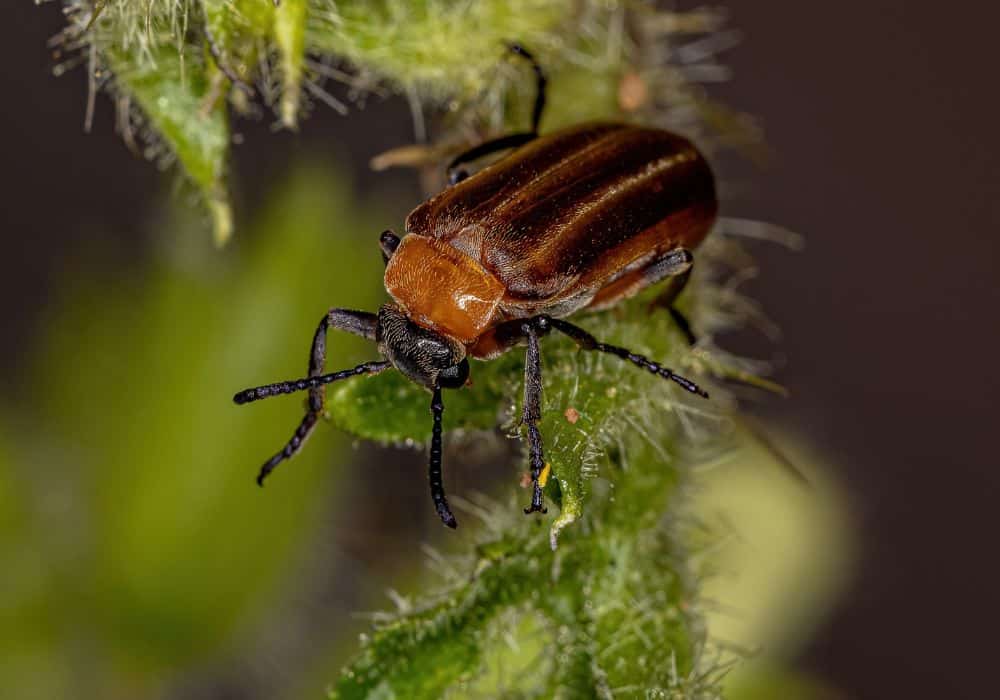
Blister beetles don’t damage your property. They aren’t typical household pests like termites, gnats, and cockroaches. But they do pose other types of risks:
1. Blisters
Most people think blister beetles bite and sting, which is not true. These beetles have no stingers or a powerful jaw that can puncture human skin. But they still manage to leave painful blisters on your skin.
This is because their bodies contain a toxic chemical called cantharidin. It’s an odorless and colorless substance that blister beetles release when they feel threatened or attacked. So, if you touch a blister beetle or crush it, cantharidin will leak out onto your skin.
Thankfully, the chemical isn’t toxic enough to trigger severe reactions in humans. It will only form a painful welt or blister. We’ll discuss its treatment later in the article!
2. Crop Damage
Blister beetles primarily feed on grasshoppers. This is why they are usually found wherever grasshoppers are abundant. But while their larvae will only feed on grasshopper eggs, the adults will also munch on flowers, vegetables, and grassy fields.
This makes them an annoying pest for farmers and garden enthusiasts.
The adult blister beetles will come in swarms to attack the plants. Since these swarms are fast, the damage to the crops can be significant.
3. Livestock Poisoning
Just like humans, animals are never bitten or stung by blister beetles. But if blister beetles have infested a crop or left cantharidin secretions, your livestock may ingest it. This can lead to cantharidin toxicosis.
The affected animal will experience the following symptoms:
- Diarrhea
- Colic
- Muscle tremors
- Hyperthermia
- Bloody feces
- Frequent but painful urination
If not treated on time, the condition will worsen and lead to high-grade fever, collapse, or even death. Livestock with blister beetle poisoning can die within 72 hours!
Surprisingly, cantharidin toxicosis is more common in horses than sheep or cattle. Even if all of them ingest the same infected alfalfa hay, horses will be the only animals to fall instantly and severely sick.
So, you should always inspect the livestock feed for any signs of blister beetle infestation. If it’s infected, put it aside to be trashed or reused in some other way (don’t sell it!). And if your livestock is accidentally poisoned, take them to a veterinarian quickly.
5 Proven Ways to Get Rid of Blister Beetle Infestation

Having a blister beetle infestation outside your home is a hazard for you, your plants, and the animals. So, it’s important to get rid of them as soon as possible. Here are some proven ways to do that:
1. Remove Infested Plants
Blister beetles are the most active from mid-May to October. They will arrive in clusters to attack blooming fields. Their main targets are grasshopper egg pods, foliage, and flower beds for pollen and nectar.
However, they don’t attack the entire field. They will first infest one area and then move on to another. So, an excellent way to save your field from destruction is to inspect the plants regularly and remove the infested ones.
If there are only a few beetles on the plant, there is no need to take it out completely. Just handpick the beetles and drop them in a bowl of soapy water. This will kill them instantly and prevent further damage.
Just make sure to wear gloves and long-sleeved shirts first. These beetles can jump anywhere on your body and cause blisters on the exposed skin.
2. Spray a Biopesticide
Biopesticide refers to insect-killing formulations that are made from natural substances. This makes them non-toxic to everyone except for the pests. So, if you notice a plant infested with blister beetles, you can use a biopesticide on it.
Please note that not all biopesticides are organic or safe. You should always read the ingredient list and label directions before purchasing any product.
3. Use Diamatoceous Earth (DE)
Diatomaceous earth is a type of sand made from fossilized parts of diatoms (an aquatic organism). When sprinkled upon blister beetles, the sand particles dehydrate the exoskeleton completely. This leads to their death.
You can also use this for other field pests, like slugs and maggots. But make sure to dust diatomaceous lightly on the plants. If too much DE comes in contact with bees or other beneficial insects, it can also kill them – reducing your crop quality.
4. Get Rid of Grasshoppers
Grasshoppers are drawn to vegetable crops like beans, potatoes, and beets. They will also infest cereals and pasture grounds. And if there are grasshoppers in your land, blister beetles will be there too.
So, first, get rid of grasshoppers using biopesticides or home remedies. We don’t recommend chemicals as they can be toxic to both your plants and livestock.
Another safe method is to invite birds to your garden, yard, or field. They are natural predators of both grasshoppers and blister beetles.
5. Pluck Out These Weeds
Weeds are unwanted plants that not only make your garden look unpleasant but also encourage pests. In the case of blister beetles, it has been observed that they are specifically attracted to the following weed types:
- Pigweed (Amaranthus spp.)
- Ragweed (Ambrosia spp.)
- Ironweed (Vernonia spp.)
So, if you have these growing around your house, pluck them out. You should also consider installing row covers to prevent blister beetle swarms from invading your land.
How to Treat Blister Beetle Dermatitis?
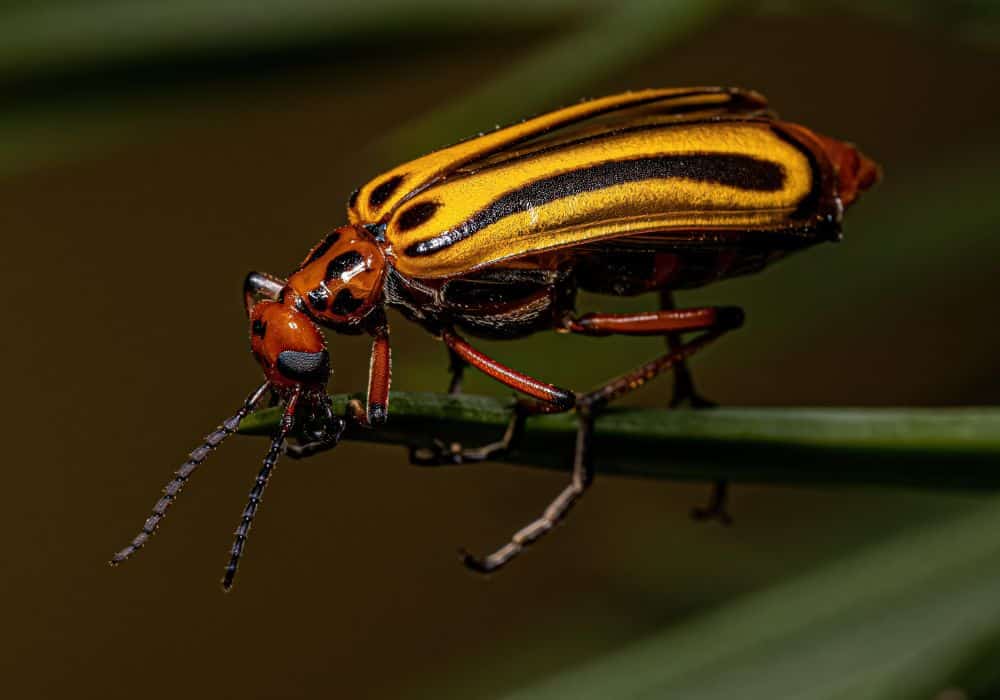
Knowing how to get rid of blister beetles is not enough. If you’re someone who loves planting, farming livestock, or just exploring the outdoors, you should also know what to do in case a blister beetle releases cantharidin on your skin.
Cantharidin is not fatal or life-threatening for humans. But exposure to the chemical can cause dermatitis in which a localized welt or blister will develop on the affected area. Here’s what they will look like:
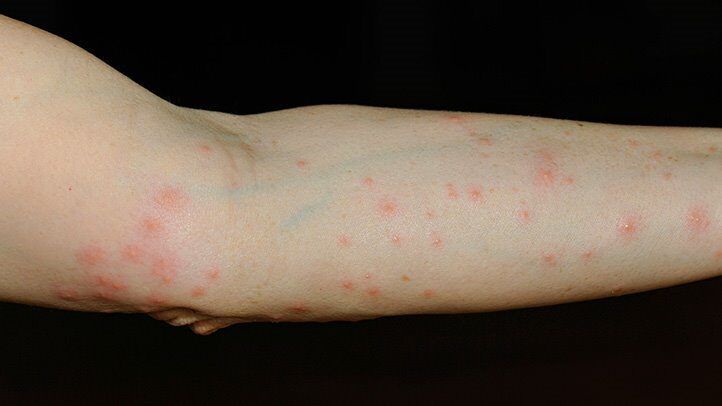
Image Credit: everydayhealth
Welt: A red raised bump
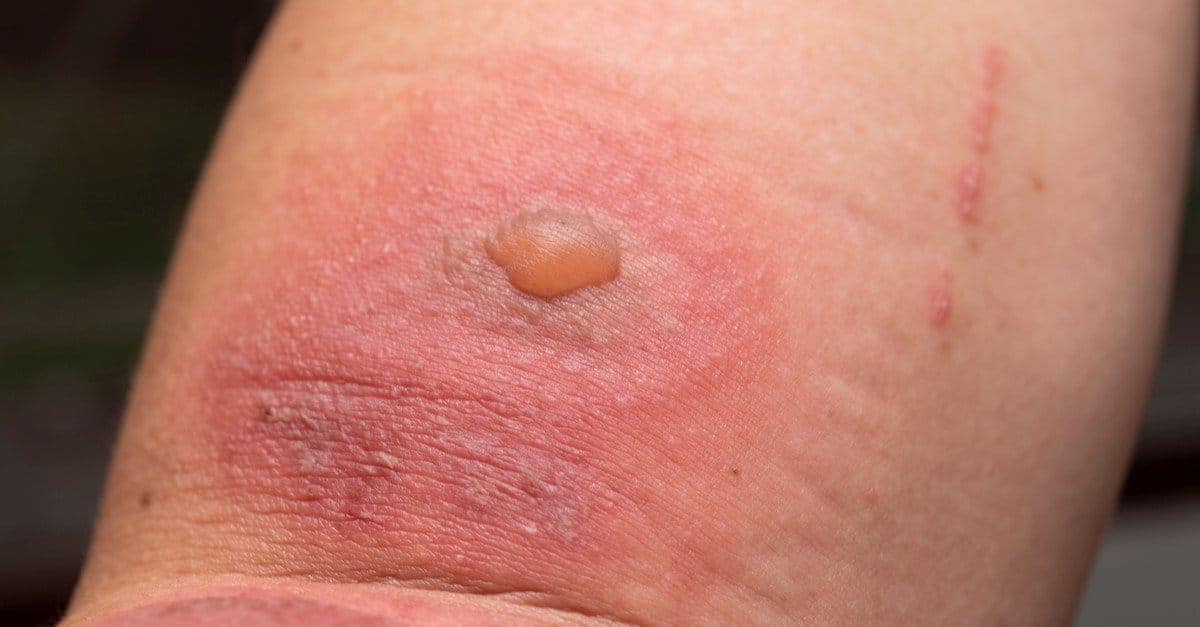
Image Credit: a-z-animals
Blister: A pus-filled bump
Both of these lesions will cause pain, irritation, and a burning sensation. However, they aren’t something to worry about.
They are temporary and will disappear within a week or two. Just make sure to wash the blisters or welts with soap and water regularly. This will prevent the development of a secondary infection.
In case you encounter multiple blister beetles, the condition will be a little extreme and the pain will be unbearable. You will have to use an antibiotic or topical steroid to improve the symptoms.
Please note that cantharidin can be dangerous for the eyes. If you rub your eyes with infected hands or a blister beetle crawls onto your face, this chemical can enter your eyes and cause an infection called the Nairobi eye.
You must contact a professional if you feel any burning sensation in your eyes.
FAQs
What’s the best insecticide for blister beetles?
Cyfluthrin or carbaryl-based insecticides are the most effective against blister beetles. But we highly recommend trying natural home remedies first. If that doesn’t work, use a biopesticide or call professionals for the best results.
How is cantharidin used naturally in blister beetles?
Blister beetles produce cantharidin (a toxic compound) as a defense mechanism against predators. When threatened, they release a cantharidin-filled liquid. This irritates the predator and encourages it to leave.
Since blister beetles are also afraid of humans, they will secrete cantharidin whenever a person touches them or picks them up. This causes irritation, blisters, and inflammation in the human skin.
What are the benefits of blister beetles?
Blister beetles offer ecological benefits, primarily through pollination. Their visits to flowers for nectar and pollen help in the transfer of reproductive material. This contributes to plant diversity and ecosystem health.
When in the larva stage, blister beetles also help reduce their grasshopper population by eating their eggs. This prevents defoliation and crop damage.
However, it’s important to destroy blister beetle larvae soon afterward. Or else, they will grow up to become another crop-damaging pest.
Before You Go!
Blister beetles are a nuisance around your house and crops. They will harm you, your plants, and your animals. So, it’s important to get rid of them as soon as possible.
We’ve already discussed the 6 tried-and-tested methods to treat a blister beetle infestation. But if you haven’t dealt with an infestation before, we highly recommend you contact a pest control service.
The professionals will offer the best blister beetle treatment within your budget. They will cleanse your property from these pesky beetles without you having to risk getting dermatitis or conjunctivitis. Good luck!
